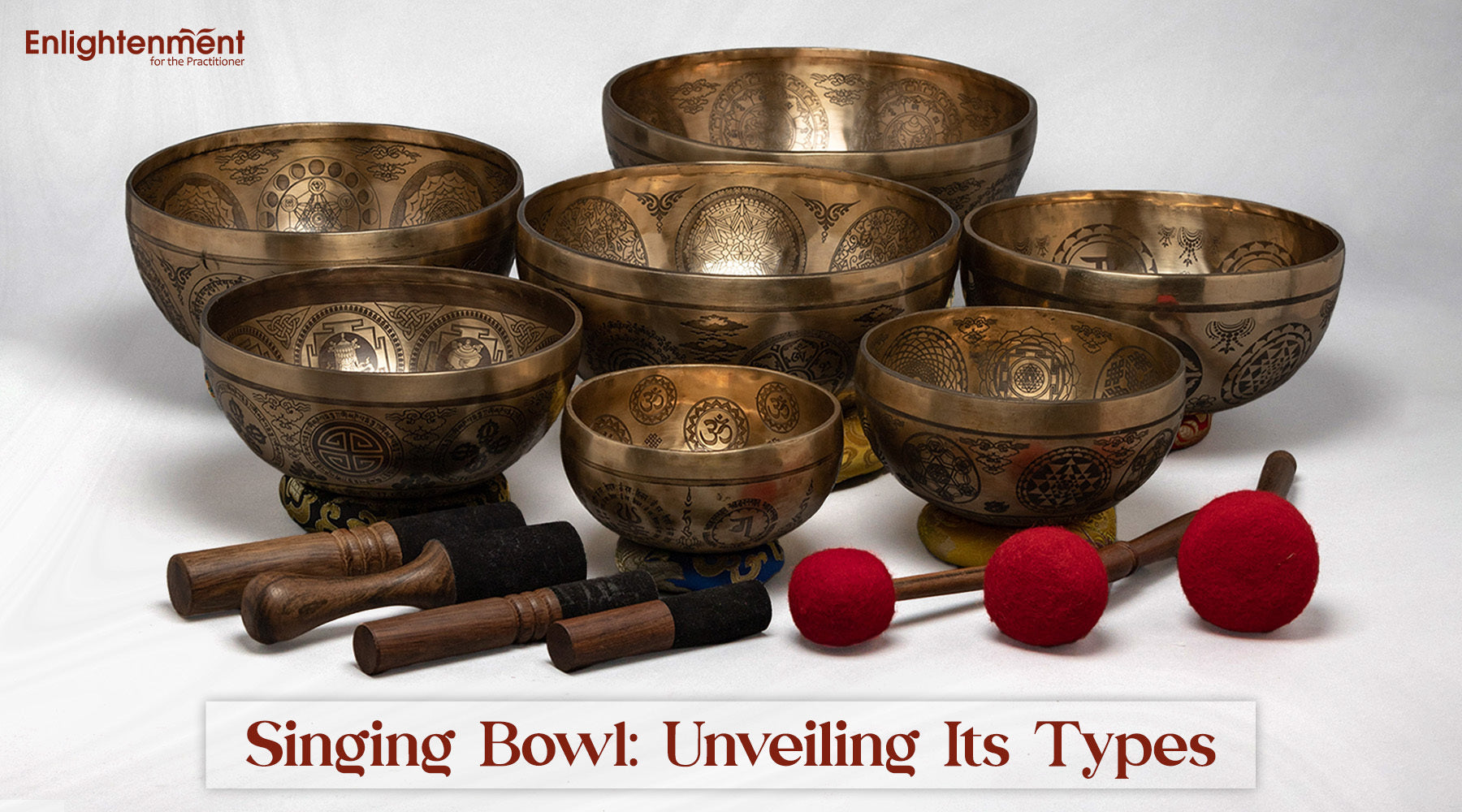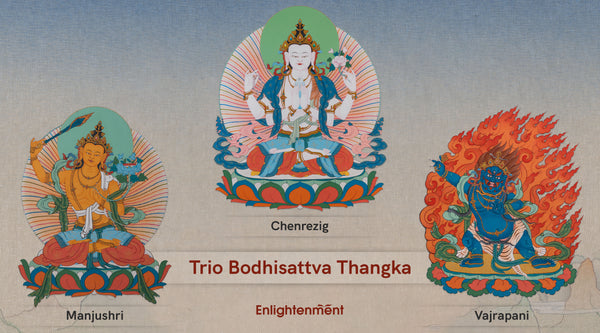Exploring Singing Bowl: Unveiling Its Types
Singing Bowl has been the long-run emissary of spiritual, meditational, and religious significance. Known for promoting deep physical relaxation and inner peace, its use has been a cornerstone of profound physical and spiritual relaxation, inner harmony, and holistic well-being for centuries. Standing bell, resting bell, prayer bowl, Buddha bowl, Himalayan bowl, Tibetan bell, Tibetan singing bowl, rin gong, bowl gong, and cup gong are just the many names of this immaculate piece of art.
No matter the name, devotees and meditation enthusiasts are confident that its therapy encourages spiritual enlightenment on top of providing significant physiological benefits. Hence, the bowl has been a part of many sacred music instrument groups for occasional ceremonial occasions.
The skilled craftsmen in Nepal and Tibet use time-honored methods and numerous alloys to create these masterpieces inherited from one generation to another. And their artistry has extended in producing more than one kind of singing bowls which are used according to preferences. Meanwhile, various origin places

Singing Bowls Types:
- Thadobati
- Jambati
- Ultabati
- Naga or Pedestal
- Mani
- Lingam
- Manipuri
- Trapezoid
- Remuna
1. Thadobati
Thadobati bowl typically comes with a slightly flat-rounded bottom and a wide, flared lip. The sides of these bowls slope inward, resulting in a deep and rich tone. Copper, tin, and a mixture of such other alloys result in such kind of unique tonal quality.
The main uses of these bowls are sound healing, spiritual rituals, and meditation. Seeing that the music created by Thadobati bowls harmonizes vibrations and induces a feeling of deep peace, it is thought to support relaxation, meditation, and general well-being.
Hence, the reason that they are sought after in both traditional Tibetan contexts and modern wellness practices globally. Additionally, Thadobati is one of the oldest designed bowls as they have been in the market since the 15th century.
2. Jambati
Jambati bowls have a rounder and more balanced shape in contrast to other singing bowls. Their straighter sides gently curve outwards on a wide and flat bottom. Normally, the edge or border of the bowl is broad.
It is preferred for its tranquil and diverse range of harmonics and melodic, multi-dimensional sound. Thus, the reason for its huge demand among the people is sound healing, meditation, and spiritual rituals. Hence, given the extraordinary sound produced, a Jambati bowl surely demands four or five artisans for it to be completed.
3. Ultabati
Ultabati singing bowls are distinguished for having a wider, shallower, and flatter shape than other bowls. This form adds to their unique sound output that is utilized in sound therapy sessions to induce calmness and alleviate stress.
Hence, the use of Ultabati has remained crucial since the olden days in Tibetan Buddhist rituals, ceremonies, meditation, and spiritual activities. Therefore, both expert practitioners and enthusiasts chose this specific bowl as part of their daily activities and culture as well.
4. Naga or Pedestal
Naga or pedestal bowls are widely known for their strong construction and unique design elements. These bowls usually feature a broader and more curved structure in contrast to other varieties of Tibetan singing bowls.
The most unique part of their construct is the bowl rests on an elevated base (therefore called a "pedestal bowl"), that raises it slightly above the ground. The base not only improves the bowl's stability but also adds to its resonant sound qualities.
These bowls are highly regarded for their cultural importance and healing properties, functioning as both practical tools and respected items in the practice of sound healing and spiritual wellness.
5. Mani
Mani, also called Mudra, Mani singing bowls are called for their uniqueness and rareness. These handheld bowls are distinctively smaller and often fit comfortably in one hand, making them portable. They mainly come with a rounded shape and a flat base, thus, making them easy to hold during meditation or therapeutic sessions.
These bowls produce a clear and resonant sound despite their smaller size. Their sound quality is characterized by a gentle yet melodious tone, often with subtle harmonics that contribute to their calming and soothing effect. They are mainly preferred for personal meditation but its uses remain limitless.
6. Lingam
Lingam bowls are another unique variety of Tibetan singing bowls. They feature a conical protrusion, the lingam, in the center of the basin, symbolizing the male creative force of the cosmos.
The tone created by Lingam bowls is distinct, typically characterized as low-pitched and full of harmonics. Thanks to their symbolic form and strong sound characteristics, Lingam bowls are valued for not just their healing properties but also for their cultural importance and spiritual impact in Eastern and Western holistic traditions.
7. Manipuri
Manipuri bowls come from the Manipur area in India and are known for their compact size and circular design. These bowls usually have a smaller design than larger Tibetan singing bowls, which makes them simpler to hold with one hand.
The Manipuri bowls are famous for their vibrant, clear tones and soothing vibrations despite their small size. Hence, they are prized for their ability to heal through sound and their cultural importance in Tibetan and Himalayan customs.
8. Trapezoid
Trapezoid bowls are another specific and unique type of singing bowls characterized by trapezoidal shape. They produce resonant sounds when struck or rubbed with a mallet. There is no doubt that these vibrations promote healing and balance in the body and mind.
Trapezoid bowls come in various sizes and are often made from metals such as bronze or brass. They are used in both individual and group settings for therapeutic purposes and are appreciated for their calming and soothing effects on the listener.
9. Remuna
Remuna bowls is known for their small size but deep and resonant tones. They are named after the town of Remuna in Odisha. Like other bowls, it also has a distinct shape, which is often squat and wide, with a rounded bottom and a flared rim.
These bowls produce a rich, harmonic sound used to gain therapeutic effects, promoting relaxation, meditation, and healing in various spiritual practices, sound healing therapies, and mindfulness exercises.
With emerging awareness and demand for singing bowls, the current market scenario reflects a growing recognition of them as not only cultural treasures but also effective tools for promoting mental, emotional, and physical well-being in today's fast-paced world. It depends on one’s perspective and choices to choose the suitable bowl for specific purposes.


